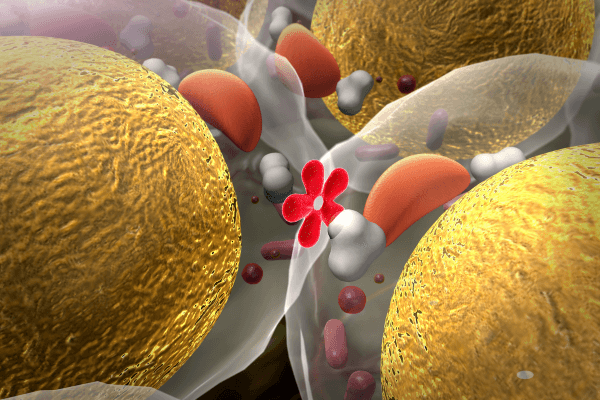You might have heard your friends or family have a difficult time during allergy season but did you know that your little furry friend may also suffer from allergies?
An allergy is the body’s mechanism of coping to a foreign body’s attack on the immune system. There are different types of allergies your pet may have from the most common food allergies to skin allergies, flea allergies and airborne allergies. It is quite difficult to understand or point out one particular category of allergy since most of the symptoms your pet may suffer from can overlap.
Allergic reactions in dogs
The allergic reaction termed as Atopic dermatitis can manifest in the following ways:
Hives
These reactions are not life threatening and can manifest after 6-24 hours of exposure to the allergen.
Itching, redness, swelling, and red rashes are common signs.
In comparison to dogs with heavy and long coats, it is easy to spot hives in small dogs with a short coat. Antihistamines can help cure your dog.
Oedema
Swelling or water retention of the face, especially the earflap and throat, are the most common signs. It is also called angio-neurotic oedema.
This is the second stage of the allergic reaction which has not been recognised early.
It can manifest as early as half an hour or few hours post interaction with the allergen.
Antihistamine injections are the treatment to cure your furry friend.
Swelling may also subside in a few days.
Anaphylactic shock
The most serious reaction to an allergen is anaphylactic shock.
Your pup’s blood pressure may drop due to the counteracting effect that the body’s immune system has on the allergen.
However, such cases are very rare in dogs.
Determinants of allergy in dogs
Flea allergy dermatitis (FAD)
Unlike popular belief, fleas are not active only in certain seasons or months. They are quite active all year round however, the rate of infestation is high during particular months. It is most common in summer and warm climates. Flea allergy dermatitis (FAD) occurs due to the interaction between the saliva of the flea and your dog’s immune system.
Symptoms
Symptoms of FAD are influenced by the frequency, duration, other skin conditions present and hypersensitivity level.
The common symptoms of FAD are visible on the lower back, tail head and inner thighs such as –
Restlessness
Agitation
Itchy skin
Inflammation
Crusty skin patches
Sweet itch
Pruritus
Diagnostic tests
Test 1 – Flea comb test
This can be done by identifying ticks and fleas on your pet at a domestic level.
Use a flea comb and brush through your dog’s coat.
Wipe the comb on a white towel.
If you find small black particles which become red when pressed, there is evidence of flea infestation.
Test 2 – Intradermal skin testing
Your veterinarian may diagnose your pet based on the symptoms they pose.
They may also conduct an intradermal skin testing to confirm diagnosis.
Treatment
Use flea combs to remove fleas.
Use of suitable anti-flea shampoos prescribed by the veterinarian can soothe your dog’s skin and remove fleas.
Giving the right dose of the prescribed antihistamines or corticosteroids.
Topical applications and spot-on to break the flea-egg cycle.
Use cool water to bathe your dog.
Prevention
Dogs exposed to several flea bites are naturally more immune to FAD and may not experience any sort of skin reactions immediately or at all. It is smart to treat your dog with anti-flea products all year round to ensure your dog does not develop any other allergic reaction and keep your pet healthy. Moreover, fleas can also cause other diseases which can affect pets and humans alike.
2. Environmental allergies
Some dog breeds are genetically predisposed to airborne allergies. Some examples are Shar-Peis, Golden Retrievers, Boxers, Dalmatians, Lhasa Apsos, Shih Tzus and Labrador Retrievers etc. Dogs between the ages of 6 months to 3 years are commonly affected. However this does not signify that other dog breeds and age groups are not possibly affected. These allergies are caused by an overreaction to substances in the environment, such as pollen, dust mites, or mould.
Symptoms
The feet, face, ears, front legs, and belly are most affected. The symptoms are manifested as –
Scratching (This is the predominant symptom identified)
Wounds
Scabbing of skin
Ear infections
Hair loss
Scaly skin
Excessive licking of paws
Rhinitis
Asthma
Ear infections
Chewing of paws
Pawing of face and eyes
Sneezing
Coughing
Wheezing
Diagnosis
If you feel like you notice any of the symptoms of airborne disease in your pet, it is important to not self-treat and take them to a veterinarian, who will be able to diagnose based on symptoms, age, breed, signs and dietary history.
Treatment
Avoid allergens your pet is sensitive to.
Regularly bathe your dog.
Keep your dog’s coat clean.
Prevent infections.
Immunotherapy as prescribed by your pets’ veterinarian.
Prevention
Wash your pet’s toys and bedding with hot water and a hypoallergenic laundry wash.
Make sure to vacuum your home, carpet, bedding to get rid of dust mites.
Use a range of hypoallergenic grooming supplies for your dog.
Take your pet for frequent health check ups.
Use a humidifier to prevent the growth of moulds in your home.
3. Food Allergies
Food allergies are the most common type of allergies observed in dogs. Most allergic reactions are due to the overstimulation of the immune system in response to the carbohydrate or protein part of the food resulting in increased antibody production. Proteins are most frequently the cause of food allergies. Certain dog breeds such as Cocker spaniels and Labrador retrievers etc. are at a higher risk of developing food allergies.
Causes of food allergy in dogs are due to consumption of the same brand and type of food for a very long period of time.
The most common food allergens in canines are:
Dairy products
Beef
Lamb
Gluten
Soy
Wheat
Chicken
Eggs
Symptoms
Some of the common symptoms of food allergy are –
Itchiness of skin, paws and ears
Vomiting
Diarrhoea
Hyperactivity
Weight loss
Lethargy
Aggression
Diagnosis
The diagnosis of any food allergy is done by an elimination trial. A hypoallergenic diet is followed for a period of 8 to 12 weeks and none of the triggering food substances are included. Supplements, treats and any other food are allowed in this trial period. Once the trial period is over, reintroduce the old food slowly. If your pet has none of the symptoms during this food challenge phase, the food allergies have been resolved.
An IgE blood test may also be performed by the veterinarian to understand specific food triggers.
Treatment
Follow the hypoallergenic diet as suggested by your veterinarian once the elimination trial is conducted and completed. There are 3 types of hypoallergenic diets which may be suggested –
Veterinary hydrolysed protein diet – The size of the protein molecule is extremely diminished to be recognised by your furry friend’s body.
Veterinary novel protein diet – None of the food products present in your furry friend’s previous food are included.
Home prepared novel protein diet – None of the food products present in your furry friend’s previous diet are included.
However, it is important to remember that your furry friend is more prone to develop more than food allergy and there is likely no cure for food allergy. However, the hypoallergenic diet is very effective.
Prevention
Feed your dog a species specific diet based on their age, medical conditions and activity level.
Do not feed any human food to your fur baby.
Be proactive to identify any symptoms of allergy.
Take your pet to the veterinarian for frequent health check ups.
These allergies may be unforeseen in our furry babies but with proper care and management of allergies, we can keep them in the pink of health.
Mayuri,
Clinical Dietitian, Simplyweight













